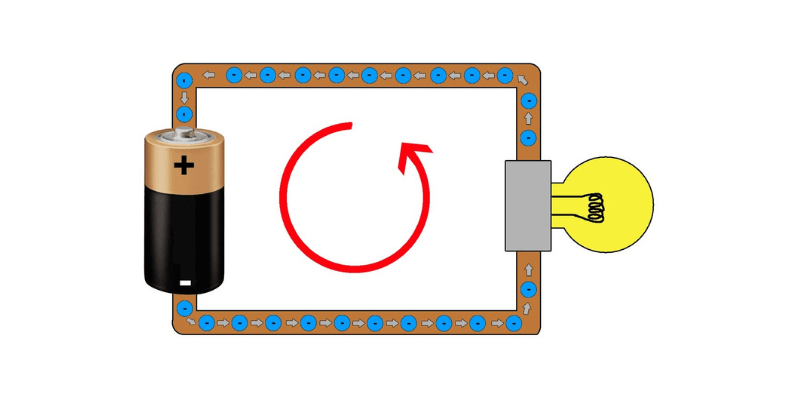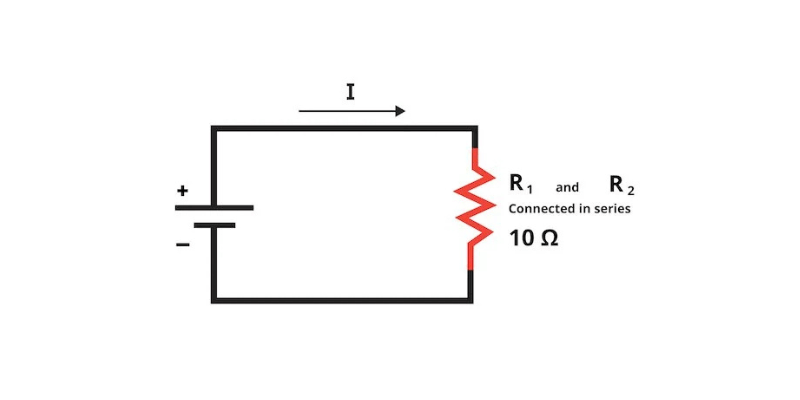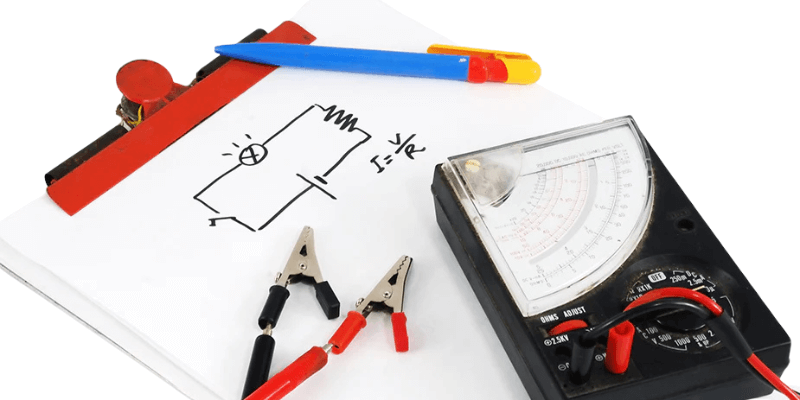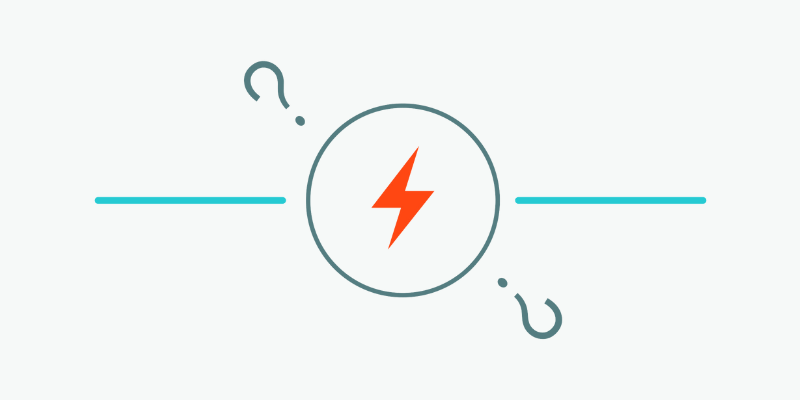AMP -er, volt, watt og ohm er viktige konsepter i elektriske systemer. Selv om det kan virke sammensatt, trenger du ikke en ingeniørgrad for å forstå strøm. Elektrisitet strømmer som vann gjennom en slange: elektroner beveger seg gjennom en leder, vanligvis en ledning. For å avklare disse konseptene, bruker vi vann- og slanganalogien for å forklare hver enkelt.
Hva er forsterkere?
AMPERE (AMP) måler elektrisk strøm, hastigheten som elektroner strømmer gjennom en leder, representert av “jeg” I ligninger. Enheten er oppkalt etter den franske fysikeren André-Marie Ampère, en pioner for elektromagnetisme.
I en vannanalogi tilsvarer elektrisk strøm strømningshastigheten på vann gjennom en slange.
Inne i hjemmets servicepanel, eller bryterboks, finner du effektbrytere merket 15, 20 og 30 ampere. Høyere permperasjon gjør at mer strøm kan strømme. Store apparater som klimaanlegg kobles til 30-ampkretser, mens de fleste utsalgssteder bruker 20-amp eller 15-ampkretser. Å kjøre for mange apparater på samme krets vil reise bryteren og kutte av strømmen for å forhindre overoppheting.

Hva er volt?
Volt, representert av “V,” Måler det elektriske potensialet som driver strøm gjennom et system. De gjenspeiler hastigheten på elektroner som beveger seg gjennom en krets og måles i volt. OLTer er oppkalt etter den italienske fysikeren Alessandro Volta.
I en vannanalogi er spenning som vanntrykk, som beveger vann gjennom en slange, på samme måte som den skyver elektroner gjennom en leder.
I USA leveres elektrisk kraft til hjem ved to spenninger: 120 volt og 240 volt. Store apparater som klimaanlegg og elektriske områder bruker 240 volt, mens mindre enheter som lyspærer og mobiltelefonladere fungerer på 120 volt.
Hva er ohm?
Oppkalt etter tysk fysiker og matematiker Georg Simon Ohm, måler Ohms elektrisk motstand i en dirigent og er representert av “R” I ligninger. Motstanden bremser strømmen av elektroner.
I en vannanalogi tilsvarer den slangediameter. En bred slange gir liten motstand og tillater rask vannstrøm. Tilsvarende muliggjør ledere med lav motstand, som kobbertråd, enkel elektronstrøm.

Hva er Watts?
Wattage er den mest kjente strømsenheten, og måler kraften en elektrisk enhet forbruker i Watts, representert av “P” I ligninger. Watts er oppkalt etter James Watt, den skotske ingeniøren som populariserte Steam Engine.
Ved bruk av en vannanalogi kan watt øker ved å enten heve vannstrømmen eller trykket. På samme måte kan du i et elektrisk system øke strømmen ved å øke strømmen eller spenningen.
For å beregne watt, multipliser spenning (V) med strømstyrke (a): V x A = W. Høyere elektronbevegelse og større kretsvolum resulterer i høyere watt. Å kjøre et vakuum bruker for eksempel 400 til 900 watt, mens ringer en dørklokke krever bare 2 til 4 watt.
Spenning, strøm, motstand
Ohms lov relaterer spenning, strøm og motstand gjennom ligningen v = i x r (hvor v er spenning i volt, jeg er strøm i forsterkere, og r er motstand i ohm). Økende spenning mens du holder motstanden konstant fører til at strømmen øker.
Ved å bruke en slangeanalogi: Økende trykk gjør at mer vann strømmer. Motsatt, hvis motstanden øker mens spenningen holder seg jevn, synker strømmen. Dette ligner på å klype en slange; En redusert diameter resulterer i mindre vannproduksjon.

Elektrisk effektivitet
I et elektrisk system øker du strømmen eller spenningen.
For eksempel produserer en 6-volt lyspære koblet til et 6-volts batteri 100 watt. Ved å bruke formelen I = P / V er den nødvendige strømmen: i = 100 W / 6 V = 16,67 ampere. Hvis du bruker et 12-volts batteri og pære i stedet: i = 100 W / 12 V = 8,33 ampere. Dette oppsettet oppnår den samme kraften med halvparten av strømmen, og reduserer kobbertap i ledninger siden motstanden bruker mer kraft etter hvert som strøm øker.
Forholdet uttrykkes som P = I²R, noe som indikerer at høyere motstand eller økt strøm fører til større strømtap i ledninger. Å bruke høyere spenning er dermed mer effektiv for elektriske systemer, og forbedrer også elektrisk motorisk effektivitet.
På 1990-tallet fikk dette konseptet bilprodusenter til å vurdere å skifte fra tradisjonelle 12-voltsystemer til høyere spenning (42 volt) systemer for bedre ledningseffektivitet på grunn av stigende elektriske fasiliteter i biler. Produsentene valgte imidlertid mot denne bryteren Fordi de forbedret effektiviteten ved bruk av digital teknologi ved lavere spenninger. Dagens hybrid- og fullelektriske kjøretøy opererer vanligvis mellom 450 og 650 volt for kraftige motorer mens de opprettholder effektive ledningsløsninger.
Watts / Volts / Amps / Ohms kalkulator
Skriv inn to verdier nedenfor for å beregne de andre:

